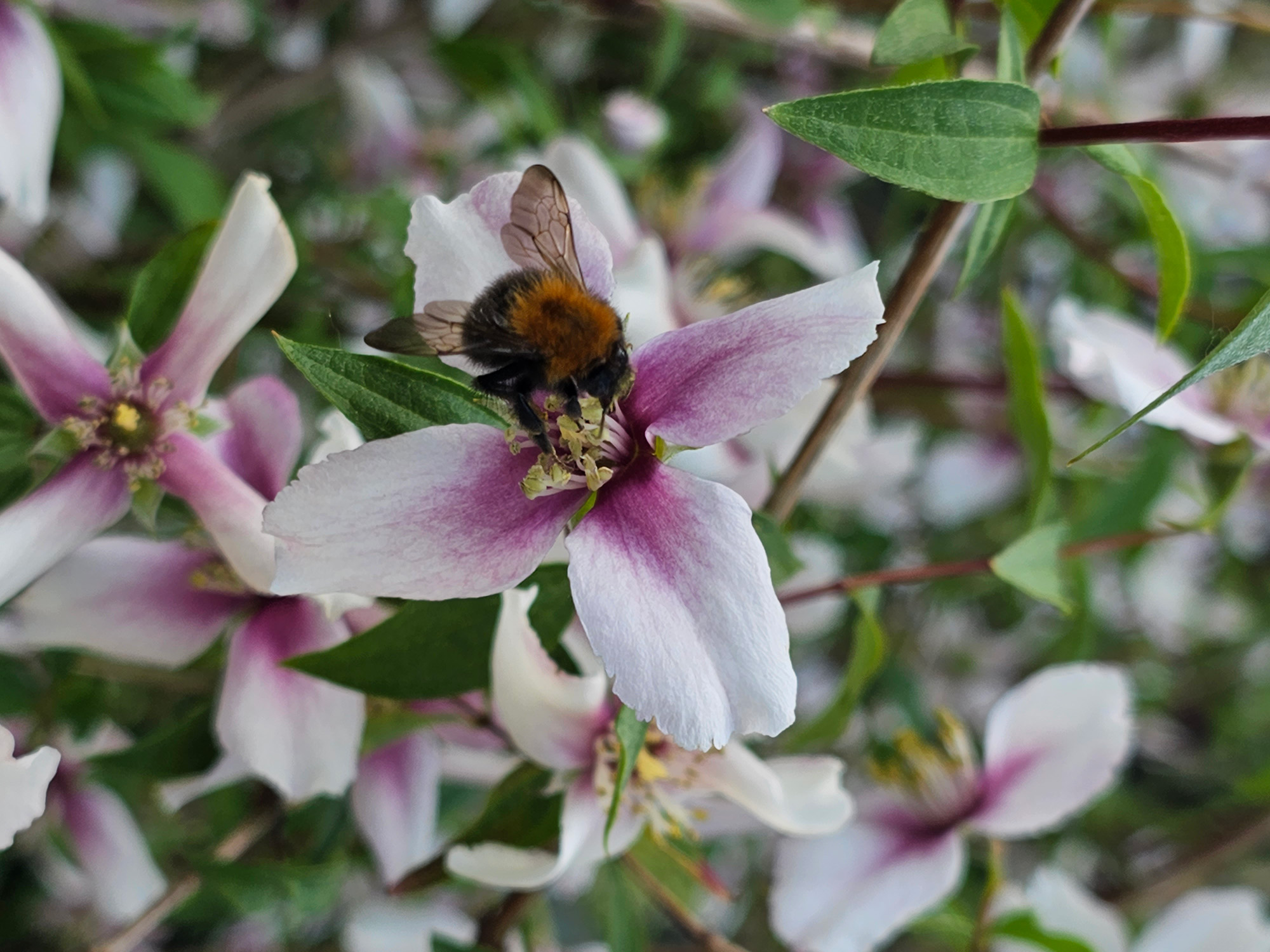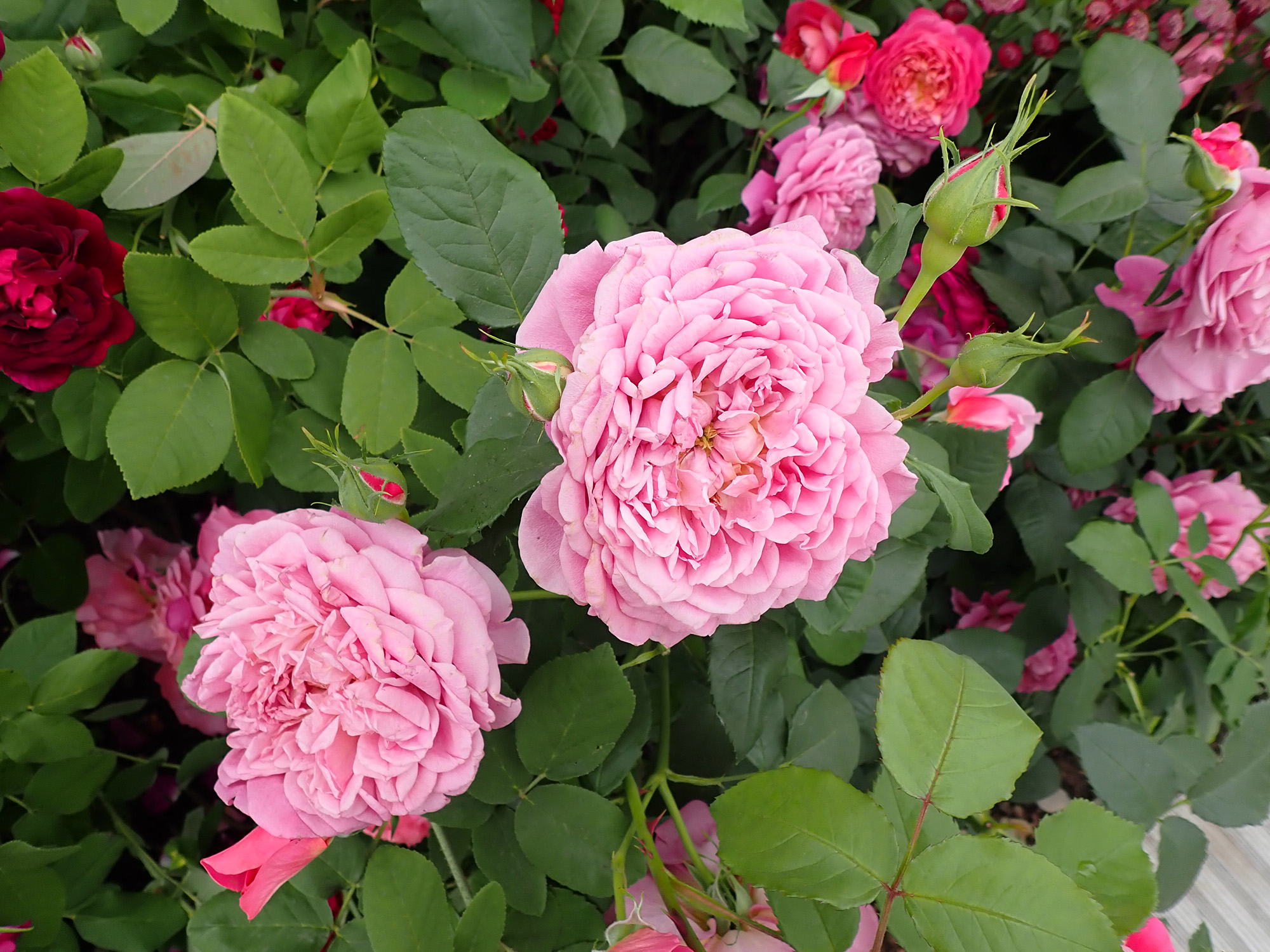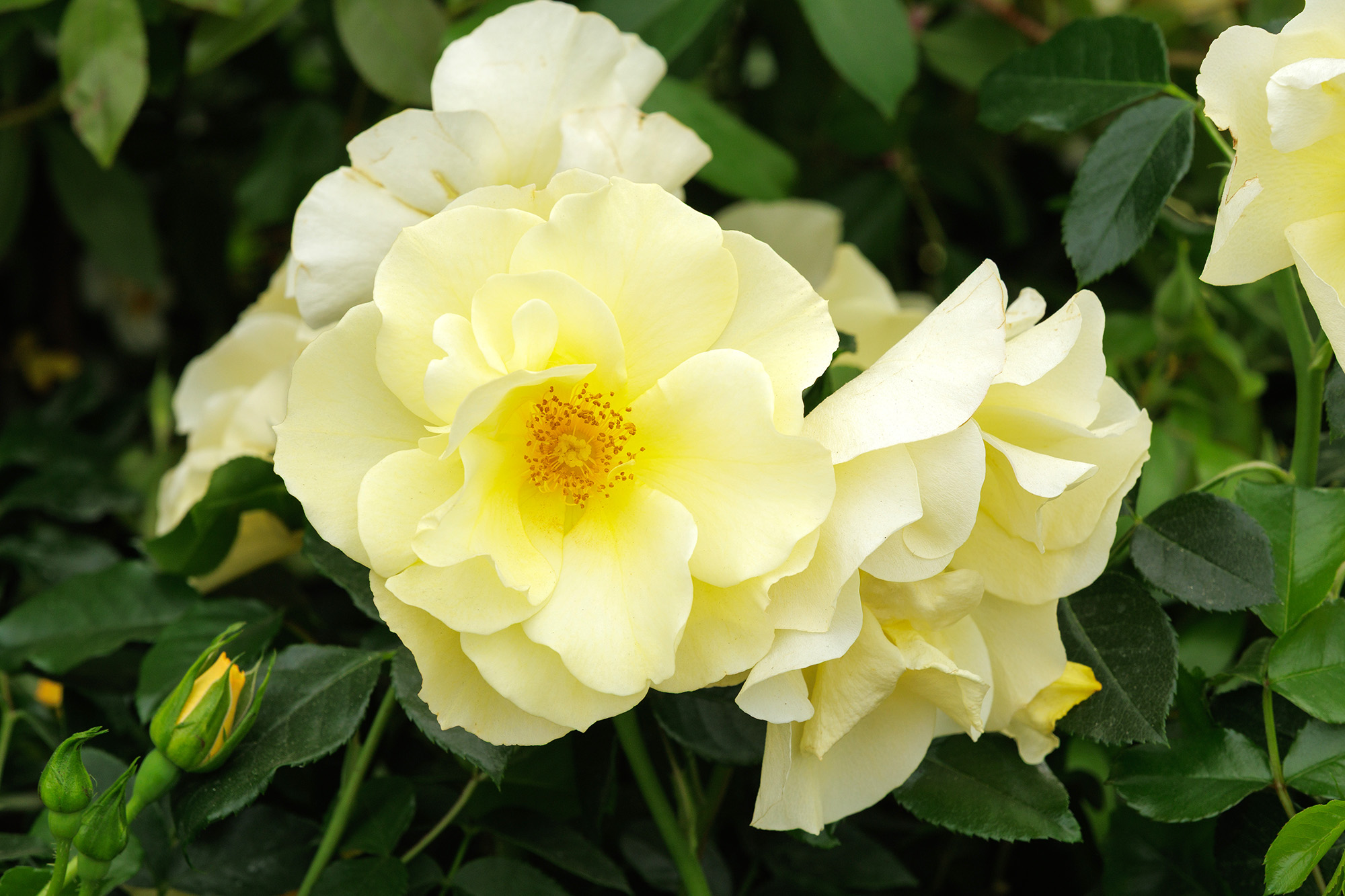Most gardens peak in June and I was reminded of the fact when I had to take a sudden detour due to a closed road. There were five of us in the car and it was a glorious June evening and we found ourselves meandering through the villages along the River Windrush towards Burford in Oxfordshire. The roses were at their peak and they seem to have thrived on the recent wet winter and dry, sunny spring. It’s been a good year for roses, no doubt about it!
‘The Garland’ rose, Gertrude Jekyll’s favourite, bedecked the main gate of Asthall Manor once home to the Mitford family. It’s a prickly blush-white rambler, bred by Wells and introduced in 1835, and it only flowers once in summer. But it does so gloriously! These summer-flowering roses make June ‘rosiferous’, because the repeat-flowering ones ration their flowers out in flushes. Make sure you grow both types and then you’ll get a ‘rosiferous’ summer. That’s a Val word, by the way.

I’m pretty sure that the astute Miss Jekyll – rhymes with treacle – of Munstead Wood in Surrey chose ‘The Garland’ for its exceptionally fruity scent, For fragrance is the greatest gift of all. When I arrived home, on the same glorious evening, I opened the gates and I was enveloped by the sweet scent of ‘Buff Beauty’, an apricot Hybrid Musk rose with matt coppery foliage. This glorious rose has arching branches that form a five-foot roundel, so it needs a bit of space. Mine’s tucked away in a warm position, because this rose was raised in the fields of Havering-atte-Bower in Essex. That’s a drier and warmer spot than the Cotswolds and, at the moment, I’m writing this in my coat – because the weather’s cool and windy today. Make note: must move to Essex!

The Hybrid Musk roses were mainly raised by the Revd. Joseph Pemberton (1852 -1926), assisted by his gardener, James Bentall. Pemberton was a famous rosarian and only started breeding roses following his retirement. His nursery grew and sold up to 40,000 roses a year in its heyday. Pemberton named roughly 50 roses in all between 1913 and 1924 and he always selected for scent so his roses tend to vary in colour and form. Graham Thomas, an expert rosarian, rated 11 of them as exceptional.
Some have Edwardian names straight out of a John Betjeman poem. I can recommend ‘Felicia’ (1928), ‘Penelope’ (1924) and ‘Cornelia’ (1925). I’m very fond of the small clusters of coppery pink flowers produced by ‘Cornelia’ for one stem makes a small posy. The more upright cream-white to pale-pink ‘Penelope’ can make a good hedge. I would also grow the shell-pink ‘Felicia’, if I had enough room. They all have darker buds and good foliage, a Hybrid Musk trait. Trevor White Roses have a good number on sale.
When the unmarried Pemberton died in 1926, he gifted his rose fields to his two gardeners. One of them, James Bentall, carried on his work and his wife Ann named ‘Buff Beauty’ in 1939 following James’s death. In my opinion, that’s the best of the lot. The Bentalls also named ‘Ballerina’ (1937) and The Fairy (1932) – two roses I muddle up all the time. There’s no excuse for this Val. ‘The Fairy ‘has clusters of small, pink double flowers and ‘Ballerina has clusters of single pink flowers!!

As soon as I walked up my garden path the heady scent of roses was replaced by a waft of citrus – courtesy of mock orange, or philadelphus. ‘Belle Etoile’ is one of the best, with single white flowers blotched in damson. It gains in fragrance in the evenings. ‘Belle Etoile’ was named by Victor Lemoine of Nancy in France in the late 1800s. Lemoine produced the first double potentilla, ‘Gloire de Nancy’.
He and his antecedents were famous for their tree lilacs.
The Lemoine family named 200 in all and one of my favourite horticultural stories involves Victor’s wife Marie Louise. She was twenty years younger and, after Victor reached a certain age, she would scale the ladder in order to make the crosses on the tall tree lilacs, being more agile and far more sharp-sighted. I have two pure-white compact mock oranges. ‘Sybille’ and ‘Lemoinei’, mingling with single-flowered roses like ‘Kew Gardens’, on the garden edges. Victor and Marie Louise live on in my garden.
‘Belle Etoile’ though is the best philadelphus, because it’s just the right size for a border. The pure-white ‘Virginal’ is a lanky giant and the double-white ‘Manteau d’Hermine’ is too compact. Pruning usually consists of removing a third of the old wood after flowering. There’s a new kid on the block though, for this year’s RHS Chelsea Flower Show Plant of the Year was a pink-flowered philadelphus named PETITE PERFUME PINK. This cool-pink philadelphus was deliberately bred by the recently-retired propagator Alan Postill, who gave us Daphne bholua ‘Jacqueline Postill’ in the early 2000s. Alan worked for Hilliers for 60 years and they are marketing it – so it should be widely available in years to come.

PETITE PERFUME PINK was an impressive winner at Chelsea, getting 43% of the vote because 57 of the 130 judges picked it as the winner. Having been involved in judging in previous years, that’s an endorsement I can tell you! We often had to revote to get a result, sometimes twice. It’s the first pink-flowered philadelphus with dark-centred pale-pink flowers emerging from deeper pink buds. The RHS website says that this fully hardy no-prune shrub is easy to grow in full sun to light shade. There is also a white form named PETITE PERFUME WHITE. This is more strongly scented.

I am growing more shrubby plants than I used to, in order to cast more shade in our hotter summers. I find philadelphus are useful because they flower slightly before, or after the roses, spilling their lemon-fragrance through the air.
The roses were magnificent at this year’s Chelsea, David Austin and Peter Beales excelled, probably helped by the sunny spring. Their new roses included Austin’s ‘The King’s Rose’, a repeat-flowering striped pink and white and I am going to plant this one as soon as it gets here. Jo Thompson’s Glasshouse Garden featured ‘The Wild Rover’, a single repeat-flowering purple-red shrub rose, with a yellowish eye, and everyone loved it. It mingled with David Austin’s ‘Emma Bridgewater’, launched in 2024. This rose changes colour as the flowers mature, opening a deep-pink, then softening to mauve-pink. Pink is a tricky colour to get right in the garden, because the warm salmons jar against the blue-pinks.

My favourite new rose was a wildlife-friendly semi-double yellow rose named ‘Ashton Wold’, launched by Peter Beales. ‘Ashton Wold’ was the Northamptonshire garden of Miriam Rothschild near Oundle. Miriam (1908-2005) was a world-renowned expert on fleas. In her later years she began developing flower meadows and these inspired King Charles 111’s meadows at Highgrove House. I was lucky enough to visit her garden in the second half of the 1990s and I was wowed by the wildflowers because lots of butterflies were flying on that day. ‘Ashton Wold’ is available as a bareroot rose this autumn. And my order is in!











